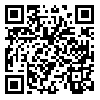Volume 8, Issue 4 (2022)
IEM 2022, 8(4): 317-325 |
Back to browse issues page
Download citation:
BibTeX | RIS | EndNote | Medlars | ProCite | Reference Manager | RefWorks
Send citation to:



BibTeX | RIS | EndNote | Medlars | ProCite | Reference Manager | RefWorks
Send citation to:
Abdolahi S, Dalimi A, Piranestani M. Molecular Detection of Blastocystis Subtypes in Domestic Pigeons and Their Owners in Tafresh City. IEM 2022; 8 (4) :317-325
URL: http://iem.modares.ac.ir/article-4-58764-en.html
URL: http://iem.modares.ac.ir/article-4-58764-en.html
1- Graduate of Parasitology, Faculty of medical science, Tarbiat Modares University, Tehran, Iran.
2- Department of medical Parasitology and Entomology, Faculty of Medical Sciences, Tarbiat Modares University , dalimi_a@modares.ac.ir
3- Department of medical Parasitology, Faculty of Medical Sciences, Tarbiat Modares University
2- Department of medical Parasitology and Entomology, Faculty of Medical Sciences, Tarbiat Modares University , dalimi_a@modares.ac.ir
3- Department of medical Parasitology, Faculty of Medical Sciences, Tarbiat Modares University
Abstract: (663 Views)
Aims: Blastocystis is a common intestinal parasite among humans and various animals, including birds. The parasite has at least 28 known subtypes, of which nine subtypes have been reported in humans and livestock. The aim of this study was to determine the prevalence rate and common subtypes of Blastocystis hominis in pigeons and their owners in Tafresh city.
Materials & Methods: The present study was designed and conducted as a case control in Tafresh city (Markazi province) during 2020-2021. For this purpose, fecal samples were collected from pigeons (300 samples) and their owners (100 samples). Stool samples were studied by microscopic methods (direct and trichrome staining examinations). Then positive stool samples were examined by PCR method through amplification of 18 SrRNA gene and sequencing.
Findings: In direct stool examination, 39 (13%) out of 300 pigeon samples and 18 (18%) out of 100 human fecal samples were found to be positive for Blastocystis. In trichrome staining method, 18% of human samples and 15% of pigeon samples were positive, while in PCR test, only 2.5% of pigeon samples and 4.5% of human samples were Blastocystis positive. The alignment results showed that all Blastocystis strains isolated in this study (100%) were similar to subtype 3.
Conclusion: Due to the low prevalence rate of this parasite in pigeons in Tafresh city, their owners are less likely to be infected with this parasite. Therefore, the relative transmission risk of this parasite from pigeons to humans is low.
Materials & Methods: The present study was designed and conducted as a case control in Tafresh city (Markazi province) during 2020-2021. For this purpose, fecal samples were collected from pigeons (300 samples) and their owners (100 samples). Stool samples were studied by microscopic methods (direct and trichrome staining examinations). Then positive stool samples were examined by PCR method through amplification of 18 SrRNA gene and sequencing.
Findings: In direct stool examination, 39 (13%) out of 300 pigeon samples and 18 (18%) out of 100 human fecal samples were found to be positive for Blastocystis. In trichrome staining method, 18% of human samples and 15% of pigeon samples were positive, while in PCR test, only 2.5% of pigeon samples and 4.5% of human samples were Blastocystis positive. The alignment results showed that all Blastocystis strains isolated in this study (100%) were similar to subtype 3.
Conclusion: Due to the low prevalence rate of this parasite in pigeons in Tafresh city, their owners are less likely to be infected with this parasite. Therefore, the relative transmission risk of this parasite from pigeons to humans is low.
Article Type: Original Research |
Subject:
Parasitology
Received: 2022/01/17 | Accepted: 2022/06/20 | Published: 2022/12/19
Received: 2022/01/17 | Accepted: 2022/06/20 | Published: 2022/12/19
Send email to the article author
| Rights and permissions | |
 |
This work is licensed under a Creative Commons Attribution-NonCommercial 4.0 International License. |









